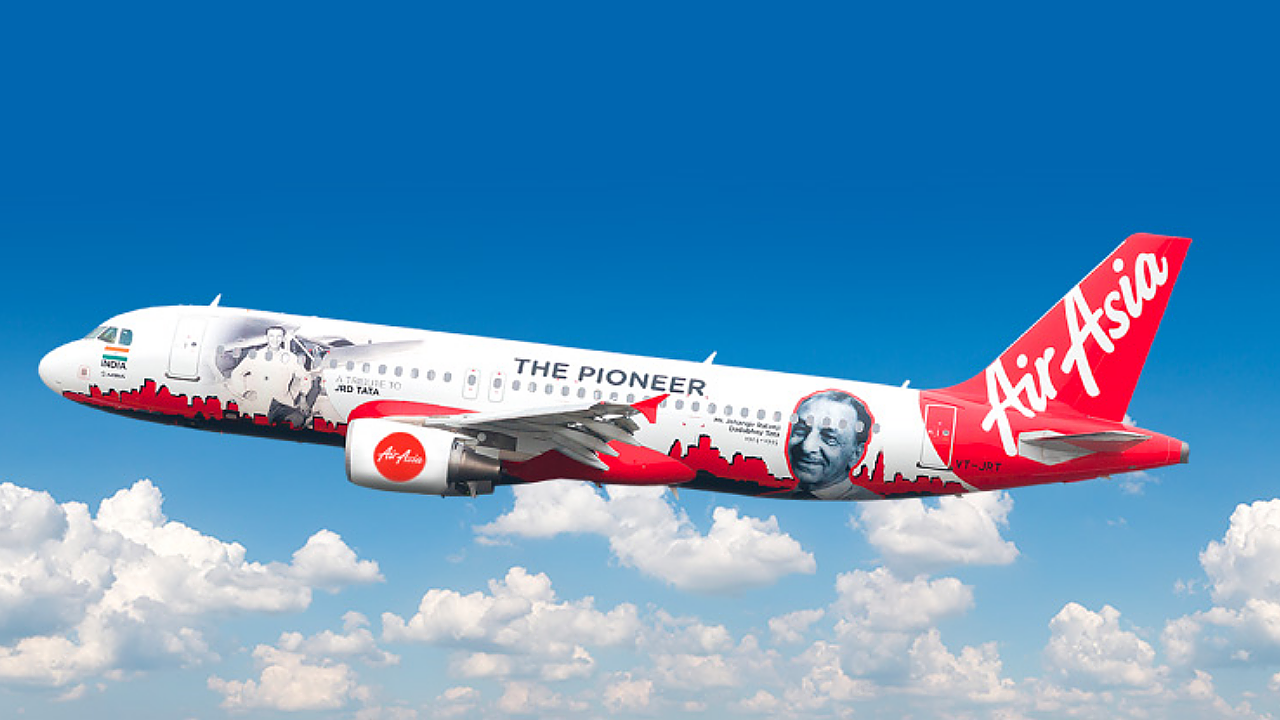
The Tata Group is moving to consolidate its airline operations under a single entity after acquiring Air India in January. The group’s airline operations now encompass Air India and Air India Express and its stake in Air Asia India and Vistara, which operate as a Low-Cost Carrier (LCC) and Full-service Airline, respectively.
According to domestic air traffic data released for the month of March by the Directorate General of Civil Aviation – Air India (8.8%), Vistara (8.9%) and Air Asia India (6.5%) had a total market share of 24.2% as compared to industry leader Indigo’s market share of 54.8%. Tata Group’s efforts to turnaround Air India will prove a challenging endeavour, with the combined losses of Indian airlines in FY21 expected to surpass INR 20,000 crore, coupled with fluctuating fuel prices which have further dented airline profitability.
Air India recently petitioned the Competition Commission of India (CCI) to acquire a 100% equity stake in Air Asia India. At present, just under 84% of Air Asia India is owned by Tata Sons, with the remaining 16.33% owned by Air Asia Investment Limited (Malaysia). Air Asia India had reported an annual FY21 net loss of INR 1,532 crore compared to INR 782crore the previous year and has never reported profits since it commenced operations in June 2014.
The LCC operates a fleet of approximately 28 aircraft comprised of Airbus A320neo and ceo jetliners. In October last year, the airline claimed to be the first Airbus operator in the world to start TaxiBot services with passengers onboard using a modified Airbus fleet. A TaxiBot allows an aircraft to be towed from the terminal gate to the take-off point or vice-versa without using the aircraft’s engines, delivering significant savings in fuel and emissions.
The Tata Sons also have a 51% stake in Vistara, with Singapore Airlines Limited (SIA) holding the rest. The airline continues to operate as an independent entity, though industry observers expect it to be part of the consolidated Air India once the acquisition and integration of Air Asia India are complete. For now, Vistara continues to operate as an independent entity and it completed seven years of operations this January and has flown over 30 million passengers since inception. Over the last two years, the airline has also introduced onboard WiFi connectivity and fully-flat beds on its A321neo aircraft and Boeing 787 jetliners. Vistara operates a fleet of 50 aircraft, including 39 A320, four A321neo, five 737-800NG, and two 787-9 Dreamliner aircraft. It has four more 787s on order.
In March, Vistara became the first scheduled Indian carrier to deploy RFIDAeroCheck technology to track the presence and expiration of emergency equipment on its entire Airbus and Boeing fleet. It enables efficient management of all life-limited components, ensuring their presence on the aircraft and track expiry dates. This is done by storing information related to tracked components within a server-wide application database. The successful implementation will allow Vistara to track all emergency equipment on its aircraft in a fraction of the time required previously, saving costs significantly. The RFID maintenance scan on a 787 aircraft having 288 life vests takes only 60 seconds, while an O2 Generator presence and expiry check take only 30 minutes compared to the four man-hours it took earlier.

Streamlining Operations
Tata Sons will also look to establish a new office in Gurugram for Air India, Vistara, Air Asia India, Air India Express and ground handling service AI SATS to streamline operations. The consolidation of these airlines under the Air India umbrella will generate cost-efficiencies by reducing duplication efforts. The decision could be because Talace, the wholly-owned subsidiary of Tata Sons, which paid INR 18,000 crore for Air India, had the right to use the airline’s corporate office and land, buildings at Delhi and Mumbai airports on the right to use basis for a limited period only.
Air India’s day-to-day operations have already been streamlined, focusing on cost-efficiencies, strict on-time performance across its flight schedules, and an improved cabin experience. However, before saving money, Air India will need to navigate the tricky path of workforce rationalisation across Air Asia India and Vistara and renegotiate contracts. At the time of its purchase by Talace, Air India, along with Air India Express and AI SATS, had 17,984 employees, of which 9,617 were permanent employees. There will also be the cost of repainting aircraft belonging to Air Asia India with new liveries, refurbishing interiors, etc and integrating these aircraft into Air India’s fleet and flight schedule will also take a while.